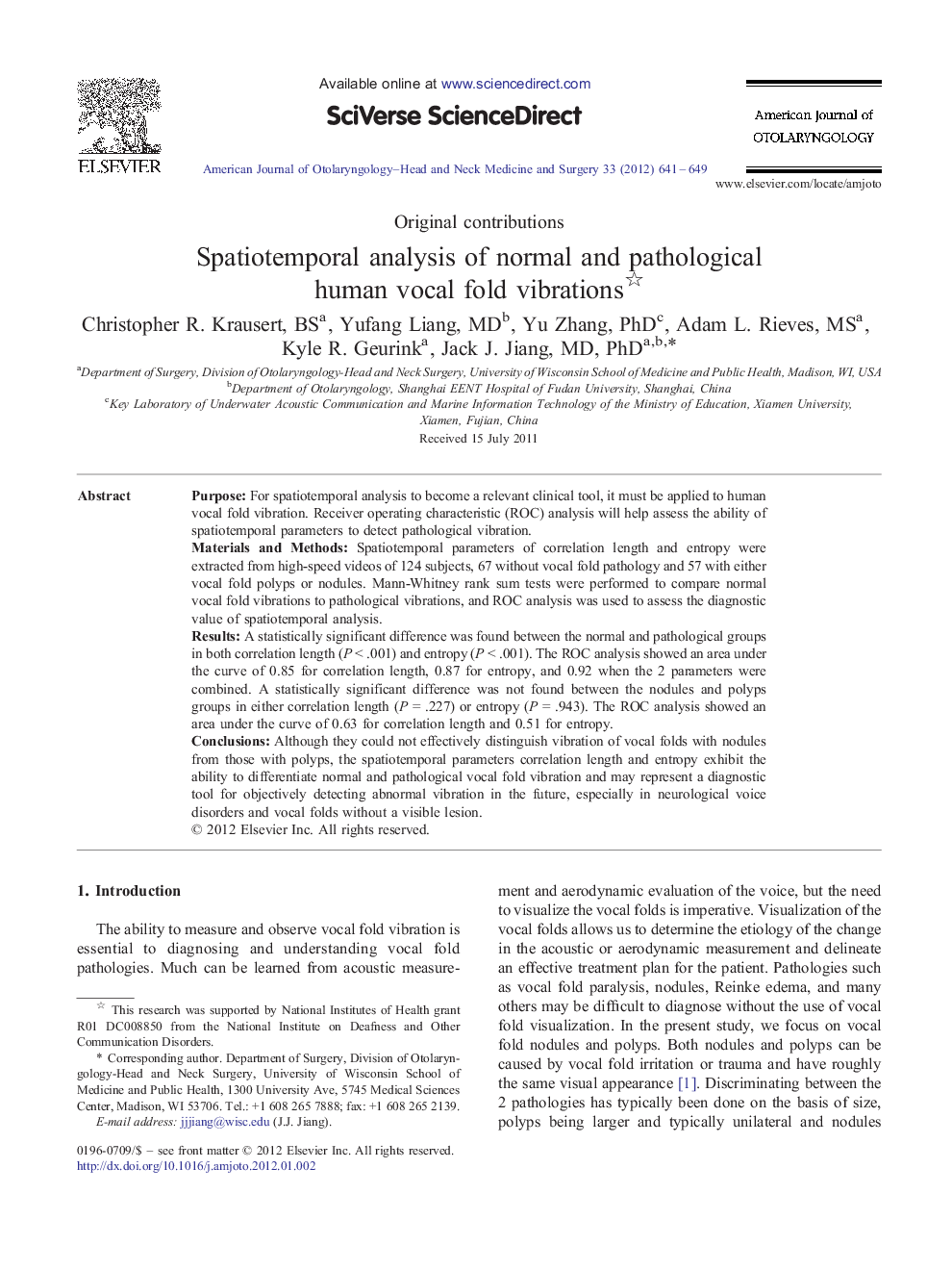| Article ID | Journal | Published Year | Pages | File Type |
|---|---|---|---|---|
| 4103306 | American Journal of Otolaryngology | 2012 | 9 Pages |
PurposeFor spatiotemporal analysis to become a relevant clinical tool, it must be applied to human vocal fold vibration. Receiver operating characteristic (ROC) analysis will help assess the ability of spatiotemporal parameters to detect pathological vibration.Materials and MethodsSpatiotemporal parameters of correlation length and entropy were extracted from high-speed videos of 124 subjects, 67 without vocal fold pathology and 57 with either vocal fold polyps or nodules. Mann-Whitney rank sum tests were performed to compare normal vocal fold vibrations to pathological vibrations, and ROC analysis was used to assess the diagnostic value of spatiotemporal analysis.ResultsA statistically significant difference was found between the normal and pathological groups in both correlation length (P < .001) and entropy (P < .001). The ROC analysis showed an area under the curve of 0.85 for correlation length, 0.87 for entropy, and 0.92 when the 2 parameters were combined. A statistically significant difference was not found between the nodules and polyps groups in either correlation length (P = .227) or entropy (P = .943). The ROC analysis showed an area under the curve of 0.63 for correlation length and 0.51 for entropy.ConclusionsAlthough they could not effectively distinguish vibration of vocal folds with nodules from those with polyps, the spatiotemporal parameters correlation length and entropy exhibit the ability to differentiate normal and pathological vocal fold vibration and may represent a diagnostic tool for objectively detecting abnormal vibration in the future, especially in neurological voice disorders and vocal folds without a visible lesion.
